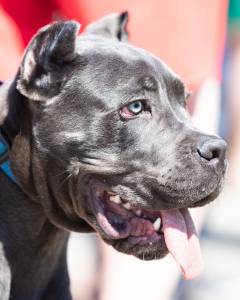
Understanding Hot Spots
Hot spots, also known as acute moist dermatitis, are red, moist, hot, and irritated lesions that can appear suddenly on your dog’s skin. They can be caused by various factors such as allergies, insect bites, poor grooming, underlying skin infections, or even stress. These spots can be quite painful and often lead to a continuous cycle of itching, licking, and biting, exacerbating the issue.
There are several reasons why dogs may develop hot spots. One common cause is allergies. Dogs, like humans, can be allergic to various things, such as certain foods, environmental allergens like pollen or mold, or even flea bites. When a dog is allergic to something, it can lead to intense itching and scratching, which can create an environment conducive to the development of hot spots. Additionally, poor grooming or a matted coat can trap moisture and bacteria close to the skin, leading to hot spot formation.
Stress and anxiety can also play a role. Dogs, like people, can experience stress, which may manifest in excessive licking or chewing of their skin, particularly in one area. This behavior can break the skin’s protective barrier, making it more susceptible to developing hot spots. Furthermore, underlying skin infections, such as yeast or bacterial infections, can also contribute to the development of these uncomfortable lesions.
Alleviating Discomfort
When you notice a hot spot on your dog, it’s essential to address it promptly. First, it’s crucial to identify and address the underlying cause. If your dog has allergies, working with your veterinarian to identify and manage the allergen can be crucial in preventing future hot spots. Additionally, ensuring your dog’s coat is well-groomed and free from mats can help prevent moisture and bacteria from accumulating.
Moreover, managing your dog’s stress levels is important. Providing a safe and comfortable environment, regular exercise, and positive reinforcement can help reduce stress and anxiety. In cases of underlying skin infections, your veterinarian can provide appropriate treatment to clear the infection and promote healing.
Prevention is Key
While hot spots can be distressing for both you and your dog, taking preventive measures can go a long way in avoiding their occurrence. Regular grooming, a well-balanced diet, and flea prevention can help minimize the risk of hot spots. Additionally, providing mental and physical stimulation for your dog can help reduce stress and boredom, thus lowering the likelihood of self-inflicted skin irritation.
In conclusion, understanding why dogs get hot spots is essential for proactive management and prevention. By addressing the underlying causes and taking preventive measures, you can help keep your furry companion comfortable and healthy. Remember, if you notice any signs of discomfort or unusual behavior in your dog, seeking guidance from a veterinarian is always the best course of action. After all, our loyal companions deserve our best efforts in ensuring their well-being.
[/fusion_text]



